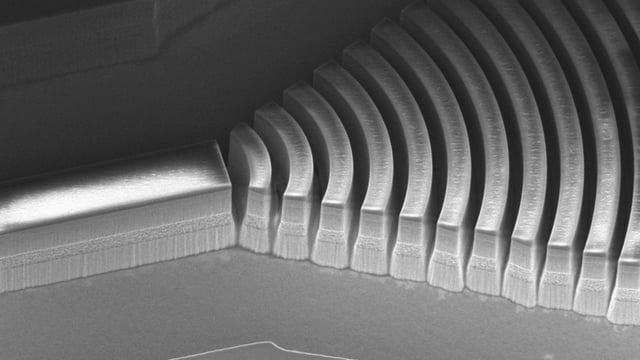Overview
- MIT fabricated an air–dielectric double‑chirped mirror directly on a quantum cascade laser and paired it with an on‑chip dispersion measurement platform to create a compact, fully integrated device.
- The system generates stable long‑wave infrared frequency combs with substantially broader bandwidth than is typically possible without dispersion‑compensating mirrors.
- The work, published in Light: Science & Applications, details a two‑year effort that overcame extreme nanofabrication demands, including mirror layers differing by only tens of nanometers and deep etches.
- Researchers report the approach is flexible across laser platforms, pointing to future extensions that could deliver even higher bandwidth and power for demanding spectroscopy.
- The team cites potential for mass‑producible remote sensors and portable spectrometers for environmental monitoring and industrial safety, with funding from DARPA and the Moore Foundation and praise from an independent expert.
